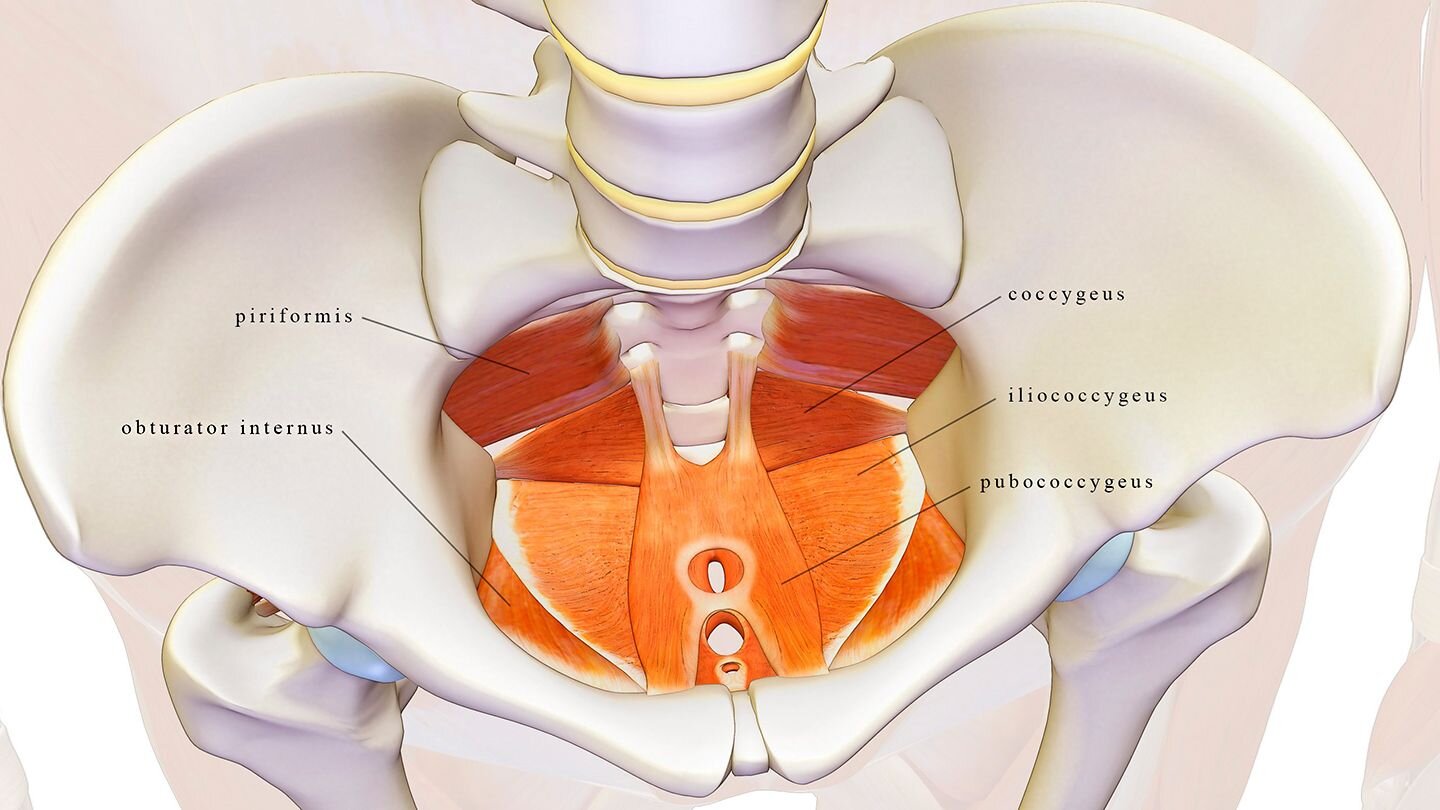Back
Connecting the Dots: Piriformis Syndrome and Its Relationship with the Pelvic Floor
By Dr. Christine Martirez PT, DPT on 10/5/2023

Piriformis syndrome is a condition that’s often overlooked but can cause significant discomfort and affect one’s daily life. Interestingly, this syndrome is closely related to the pelvic floor–a complex system of muscles, ligaments, and tissues that plays a crucial role in various bodily functions.

Understanding Piriformis Syndrome
Piriformis syndrome occurs when the piriformis muscle, located deep within the buttock, becomes irritated or inflamed. This muscle is responsible for the rotation of the hip and abduction of the thigh. When it tightens or spasms, it can put pressure on the nearby sciatic nerve, leading to pain, tingling, or numbness that radiates down the leg. The symptoms are similar to those of sciatica but have a different origin.
Symptoms of Piriformis Syndrome
The hallmark symptoms of piriformis syndrome include:
Pain: Usually felt in the buttock, it can radiate down the back of the thigh and sometimes even into the calf.
Tenderness: With palpation through sacroiliac joint, piriformis muscle, grater sciatic foramen
Tingling and Numbness: These sensations often follow the pain and may affect the leg, particularly the back of the thigh.
Aggravation by Sitting: Sitting for extended periods, especially on hard surfaces, can exacerbate the pain.
Reduced Range of Motion: You may experience limitations in hip movement.
Causes of Piriformis Syndrome

The exact cause of piriformis syndrome varies from person to person, but some common factors include:
Overuse or Repetitive Movements: Engaging in activities that involve frequent hip rotation or abduction can strain the piriformis muscle.
Muscle Imbalances: Weakness or imbalance in surrounding muscles can lead to overcompensation by the piriformis.
Trauma or Injury: A fall or direct impact to the buttocks can trigger piriformis syndrome.
Anatomical Variations: Some individuals may have a predisposition to this condition due to their pelvic and hip anatomy.
The Pelvic Floor Connection
Now, let’s explore the intriguing connection between piriformis syndrome and the pelvic floor:Proximity: The piriformis muscle is located deep within the pelvis, close to the pelvic floor muscles. It often combines with the tendons of the obturator internus muscle and the gemelli muscles. Any tension or dysfunction in the piriformis can have an impact on the pelvic floor.
Muscular Interplay: The piriformis works in conjunction with the pelvic floor muscles to stabilize the pelvis and support organs. Dysfunction in one area can affect and cause compensations in the other.
Nerve Impingement: Irritation of the sciatic nerve by the tight piriformis muscle can lead to altered nerve signaling in the pelvic floor muscles, potentially causing pelvic floor dysfunction.
Piriformis syndrome can be a painful and disruptive condition, and its close relationship with the pelvic floor highlights the importance of holistic healthcare. By addressing both issues together, you can achieve better overall well-being and comfort. A pelvic floor physical therapist can help address muscular imbalances, mobility deficits, postural education, and other contributing factors to create a plan of care that works for you.
Are you someone that suffers from piriformis syndrome and/or pelvic floor dysfunction? Call us here at Pelvic Health Center in Madison, NJ and set up an appointment with one of our skilled therapists at 908-443-9880 or email us at receptionmadison@pelvichealthnj.com.
Works Cited: https://www.pelvicrehabilitation.com/pain-in-the-butt-what-you-need-to-know-about-piriformis-syndrome/https://journals.co.za/doi/pdf/10.7196/SAJOG.2019.v25i3.1390
Read More:
How Visceral Mobilization Can Assist with the Treatment of SIBO By Dr. Christine Martirez PT, DPT on 10/22/2024 Learn about SIBO and how visceral mobilizations can be an integral part of your recovery journey Understanding Sacral Pain and How Pelvic Floor Therapy Can Help By Dr. Christine Martirez PT, DPT on 10/21/2024 Learn about sacral pain & how pelvic floor therapy can be an intregral part of your healing journey
Are you ready to live pain free?
Request An Appointment